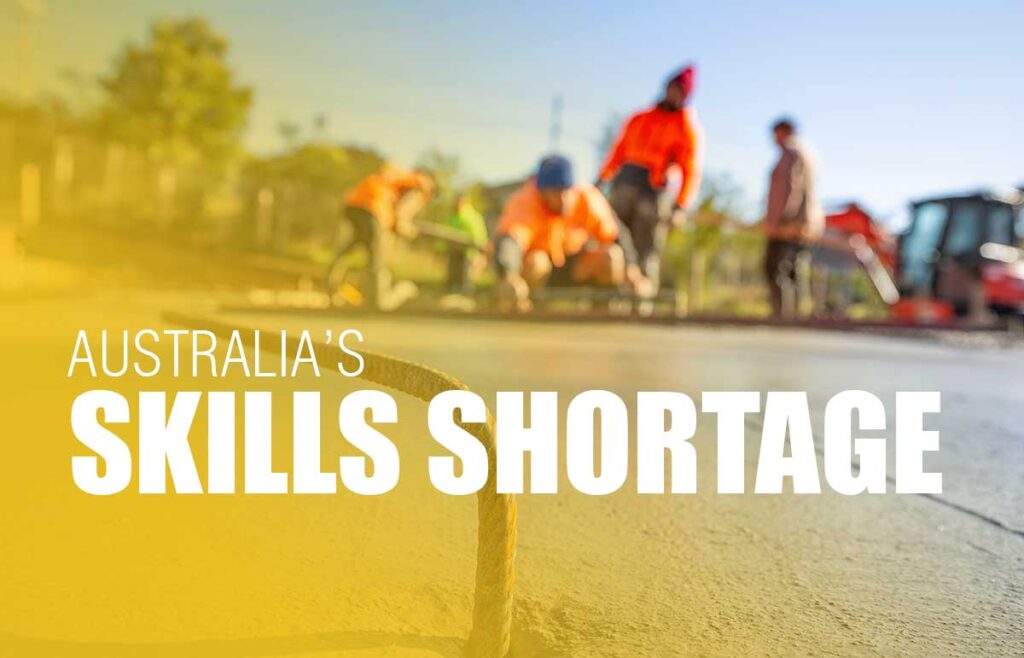In March 2024, an article by the ABC entitled 90,000 extra construction workers needed for goal of 1.2 million new homes, industry says highlighted that 60,000 new homes would need to be built each quarter to meet the government’s goal to build 1.2 million homes in the next 5 years.
Here’s the kicker: Building 60,000 homes would require 90,000 more people – that currently do not exist in the workforce.
This does not even account for the further 229,000 also required for public infrastructure projects as of Oct 2023 according to the key insights given by Infrastructure Market Capacity 2023 Report by Infrastructure Australia. Public infrastructure includes the development of roads, bridges, airports, train stations, water, gas and electricity systems, as well as public assets such as community centres and hospitals.
So now we are up to 319,000 people short and this is probably just the start.
This is the first item of a 10-part shortlist from Back to Basics Business Training Pty Ltd previous blog “There is no quick fix for the Australian housing problem” on addressing the housing shortage in Australia.
We previously identified the following
- Issue: There is a significant shortage of skilled labour in the construction industry, including tradespeople, project managers, and engineers.
- Impact: This shortage leads to delays in project delivery, increased labour costs, and compromises on project quality.
Overcoming the construction skills shortage in Australia involves addressing several key areas. Here are some strategies that can help:
- Investment in Training and Education:
- Increase funding and support for vocational education and training (VET) programs that specifically target construction trades.
- Encourage apprenticeships and provide incentives for both employers and apprentices.
- Promote Career Pathways:
- Raise awareness among young people about the benefits and opportunities in construction careers.
- Highlight the potential for career progression and skill development within the industry.
- Immigration Policies:
- Review immigration policies to facilitate the entry of skilled construction workers from overseas where local demand cannot be met.
- Ensure that visa processes are streamlined and responsive to industry needs.
- Industry Collaboration:
- Foster partnerships between industry stakeholders, educational institutions, and government bodies to develop targeted training programs.
- Encourage collaboration on research and development to improve construction techniques and attract more skilled workers.
- Retention Strategies:
- Implement initiatives to improve job satisfaction and retention rates within the construction industry.
- Offer competitive wages, career advancement opportunities, and supportive work environments.
- Technology and Innovation:
- Embrace technological advancements in construction (e.g., modular construction, digital tools) to increase productivity and offset the need for additional labour.
- Invest in upskilling current workers to use new technologies effectively.
- Diversity and Inclusion:
- Promote diversity and inclusion within the industry to attract a broader range of talent.
- Support initiatives that encourage women and other underrepresented groups to pursue careers in construction.
- Government Support:
- Provide financial incentives or subsidies for construction companies to hire and train apprentices.
- Offer grants or tax breaks for investments in workforce development and training.
- Long-Term Planning:
- Develop long-term workforce planning strategies that anticipate future demand and align training programs accordingly.
- Continuously monitor and adjust policies based on industry trends and economic conditions.
The government solution
In the 2024-25 Budget, The Australian government invested 90.6 million to boost the number of skilled workers in the construction and housing sector.
- Financial Commitment: The government is investing $90.6 million aimed at boosting the skilled workforce in the construction and housing sectors. This funding aims to close the national skills gap and support the economy in achieving its goal of adding 1.2 million more homes.
- Fee-Free TAFE Training: A key initiative is the allocation of $88.8 million for 20,000 additional Fee-Free TAFE training places. This initiative is designed to increase the pipeline of skilled workers for construction and housing. Specifically:
- $62.4 million will fund 15,000 additional Fee-Free TAFE and VET places from January 2025 in collaboration with States and Territories.
- $26.4 million will support around 5,000 pre-apprenticeship program places over two years from January 2025. These programs aim to provide industry experience and encourage individuals to pursue construction apprenticeships.
- Impact of Fee-Free TAFE: Fee-Free TAFE initiatives have been successful, with over 355,000 student enrolments supported nationally by December 2023. In the construction sector alone, there were over 24,000 course enrolments in 2023, including more than 3,000 by women.
- Support for Migrants: Recognizing the contribution of migrants to meeting skill shortages, the Budget allocates $1.8 million to streamline skills assessments for approximately 1,900 potential migrants from countries with comparable qualifications. Additionally, around 2,600 Trades Recognition Australia skills assessments in targeted occupations will be prioritized. This aims to expedite the entry of skilled migrants into Australia’s construction and housing sector.
- Long-term Strategy: The Budget aligns with the Government’s Migration Strategy, focusing on enhancing skills recognition and assessment processes to attract and integrate skilled workers effectively.
According to Infrastructure Australia :
“Typical infrastructure career pathways have long lead times in and high churn rates out.
Governments should consider developing a national infrastructure workforce strategy to grow workforce capacity through long-term workforce planning with industry, to attract, retain and upskill workers, including women, particularly in a tight labour market.”
There is no quick fix for the skills shortage in Australia, which means there is no quick fix to the housing crisis.






